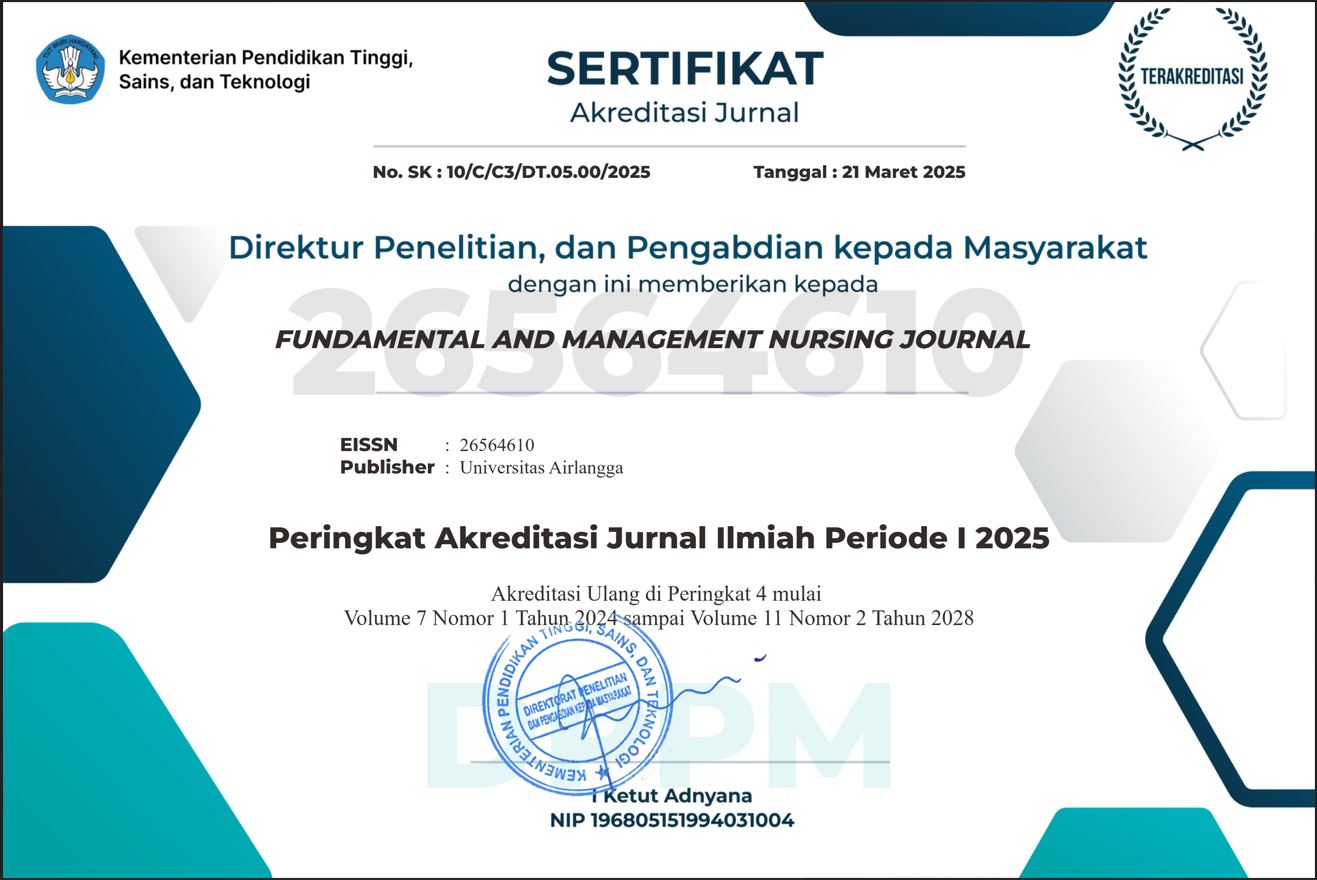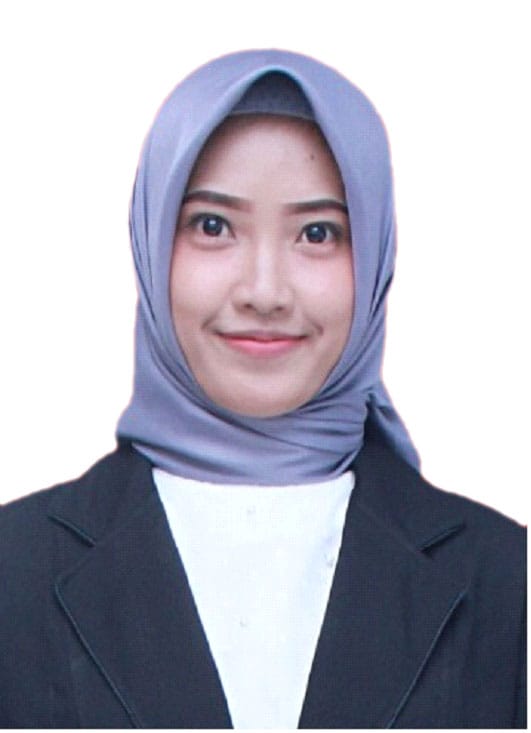Efficacy of Mulberry Leaf (Morus alba L.) Mask in Reducing Acne Vulgaris among Vocational School Students
Introduction: Teenage girls often experience acne due to hormonal changes. This condition not only affects their appearance but also lowers self-confidence and impacts their mental health. This study aims to determine the effect of the natural mulberry leaf mask formula (Mours alba L). on acne vulgaris in female students of Vocational School in Jombang, Indonesia
Method: The research design used was a One-Group Pre-Experimental, Pre-Test-Post-Test. This study involved 65 students, with a sample of 20 respondents selected through Quota Sampling. Data were collected using observation sheets and analyzed with SPSS 25 using the Wilcoxon Test.
Results: Before therapy, 15 respondents (75%) experienced moderate acne vulgaris. After therapy, 15 respondents (75%) experienced mild acne vulgaris. Statistical analysis showed a significance value of 0.000 < α (0.05).
Conclusion: Regular use of a natural mulberry leaf mask is beneficial for acne healing. Mulberry leaves contain vitamins A, C, and E, alkaloids, and flavonoids, which act as antibacterials, reduce inflammation, and reduce oxidative stress. This formula can be used as an alternative treatment for acne vulgaris.
1. INTRODUCTION
Everyone desires clean, smooth, healthy, and problem-free facial skin, especially teenage girls. However, in reality, the majority of teenage girls experience facial skin problems(Gurram et al., 2021). Biological changes in adolescents with hormonal instability easily cause acne vulgaris, resulting in inflammation that will reduce the aesthetic value of the face(Borzyszkowska et al., 2022). Although acne vulgaris does not cause severe symptoms, this condition can reduce quality of life and selfesteem, feelings of inferiority, and embarrassment about appearance(Austrilia & Ninin, 2022). In addition to disrupting appearance, acne can also cause mental health problems ranging from mild to serious, which are often inseparable from the phenomenon of "acne shaming" often experienced by individuals with acne-prone skin(Ahla et al., 2023).
In the results of the Global Burden of Disease (GBD) study, the prevalence of acne in 2019 occurred in the 15-49 age group was as much as 95%(Ollyvia et al., 2021). Data on the prevalence of acne in Indonesia in 2020 in adolescents was 80% to 85% with the highest incidence in the 15 to 18 age group. In women over 25 years old, it was 12% and aged 35-44 years around 35%(Zeichner et al., 2017). Data on the prevalence of acne vulgaris in East Java in the male population was 41.46% and in women as much as 58.54% with the highest prevalence at the age of 16-19 years(Influence et al., 2025). Based on the results of a preliminary study at a vocational high school. Considering, preliminary study, as many as 28 cases, with details of 1 normal skin, 13 oily skin, 7 sensitive skin, 3 dry skin, and 5 combination skin were reported among the students.
Acne vulgaris is caused by several factors, such as genetics, hormones, excessive sebaceous gland production, or Propionibacterium acnes infection(Vasam et al., 2023). Propioni-bacterium acnes contributes the appearance of acne vulgaris by producing lipase, which converts free fatty acids into fats in the skin and causes inflammation. During inflammation, Propionibacterium acnes bacteria multiply and increase the severity of inflammation by stimulating the production of pro-inflammatory cytokines(Zai et al., 2019).
Acne can be treated with synthetic drug therapy, such as antibiotics. Antibiotic therapy consists of two types: topical and oral. Commonly used topical antibiotics include erythromycin and clindamycin, while commonly used oral antibiotics include tetracycline, trimethoprim, and sulfamethoxazole(Madelina & Sulistiyaningsih, 2018). Additionally, other synthetic medications that can treat acne include peroxide, benzoyl peroxide, retinoids, and isotretinoids(Li et al., 2024). However, the use of synthetic medications is often associated with undesirable side effects, such as skin irritation, dryness, and hypersensitivity reactions. Moreover, the prolonged or inappropriate use of antibiotics in acne management carries the risk of inducing microbial resistance, thereby reducing treatment effectiveness and complicating longterm therapy.
Therefore, herbal-based acne therapy is an alternative to reduce the risk of side effects from synthetic medications(Almeria, 2022). This has encouraged researchers to look for various alternative efforts that use traditional medicines derived from plants that contain many active substances for use in treatment, one of which is mulberry leaves, which can function as an antibacterial(Suriyaprom et al., 2021). Acne can be treated with antibacterial medications. One plant proven to have antibacterial properties is the mulberry leaf. The compounds in mulberry leaves generally consist of alkaloids, polyphenols, and flavonoids, which function as antibacterials by forming complexes against extracellular proteins that disrupt bacterial cell membrane integration(Suriyaprom et al., 2021). A natural mask formulation made from mulberry leaves with the addition of oatmeal and corn starch has the potential to be an innovation in the safe and effective treatment of acne vulgaris. Mulberry leaves as the main ingredient of the mask contain vitamins A, C, E, as well as alkaloid and flavonoid compounds as antibacterials. In addition, oatmeal also contains vitamins E, vitamin B5, B2 and B3, which function to maintain and protect healthy skin to keep it moist and healthy(Paudel et al., 2021). And corn flour is rich in vitamins A, vitamin B, vitamin B1, vitamin C, vitamin E, vitamin K, carbohydrates, proteins, and minerals that are good for skin health.
Mulberry leaves are widely utilized in traditional medicine and cosmetic formulations due to their natural bioactive compounds with antioxidant, anti-inflammatory, and antibacterial properties. In a study(Aris et al., 2023)mulberry leaf extract can inhibit Streptococcus mutans bacteria very strongly in dental caries. Meanwhile, research(Aliah et al., 2019)shows that mulberry leaves are used as an anti-acne gel preparation that is very effective in inhibiting the growth of Propionibacterium acne bacteria. The results of antibacterial inhibition showed that gel preparations with concentrations of 2%, 4%, and 6% showed activity that inhibited bacteria with an inhibition diameter of 15.7 mm;20.3 mm;and 21.7 mm, respectively. And in research(D et al., 2020)showed that the mulberry leaf extract formula with a concentration of 10 grams of mulberry leaf material, 0.5 grams of oatmeal, 1 gram of corn starch, and 50 ml of distilled water provided a high inhibition zone against Propionibacterium acnes bacteria with an inhibition diameter of 14.8 mm, in the strong category. These findings indicate that increasing the concentration of mulberry leaf extract corresponds to a larger inhibition zone, suggesting a stronger antibacterial effect.
Due to the benefits of Mulberry leaves, this study aims to provide an overview of
Copyright (c) 2025 Avivatuz Zahroh Sifatun, Elly Rustanti, Fakhrun Nisa' Fiddaroini

This work is licensed under a Creative Commons Attribution 4.0 International License.
1. The journal allows the author to hold the copyright of the article without restrictions.
2. The journal allows the author(s) to retain publishing rights without restrictions.
3. The legal formal aspect of journal publication accessibility refers to Creative Commons Attribution (CC BY).
















